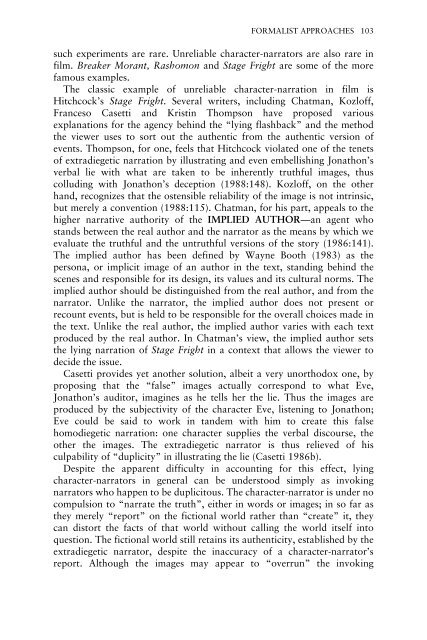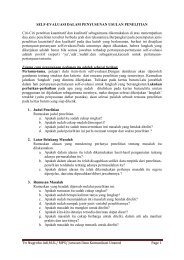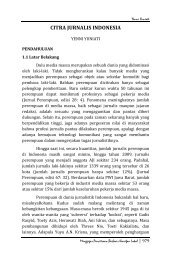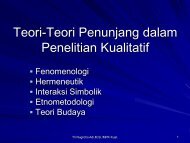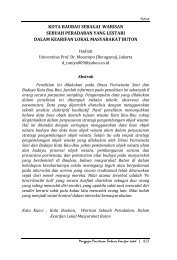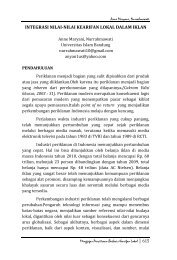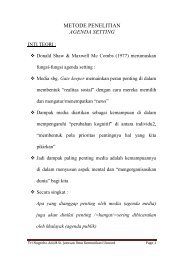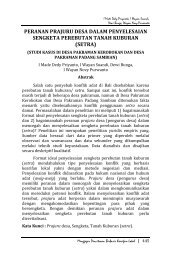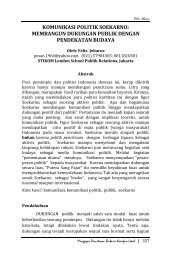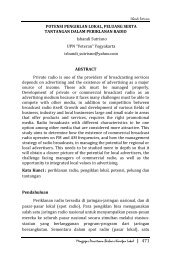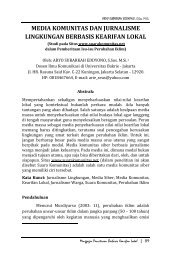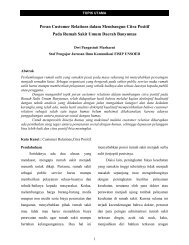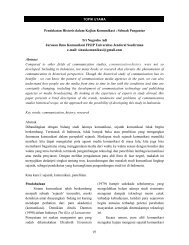New Vocabularies in Film Semiotics
New Vocabularies in Film Semiotics
New Vocabularies in Film Semiotics
Create successful ePaper yourself
Turn your PDF publications into a flip-book with our unique Google optimized e-Paper software.
FORMALIST APPROACHES 103<br />
such experiments are rare. Unreliable character-narrators are also rare <strong>in</strong><br />
film. Breaker Morant, Rashomon and Stage Fright are some of the more<br />
famous examples.<br />
The classic example of unreliable character-narration <strong>in</strong> film is<br />
Hitchcock’s Stage Fright. Several writers, <strong>in</strong>clud<strong>in</strong>g Chatman, Kozloff,<br />
Franceso Casetti and Krist<strong>in</strong> Thompson have proposed various<br />
explanations for the agency beh<strong>in</strong>d the “ly<strong>in</strong>g flashback” and the method<br />
the viewer uses to sort out the authentic from the authentic version of<br />
events. Thompson, for one, feels that Hitchcock violated one of the tenets<br />
of extradiegetic narration by illustrat<strong>in</strong>g and even embellish<strong>in</strong>g Jonathon’s<br />
verbal lie with what are taken to be <strong>in</strong>herently truthful images, thus<br />
collud<strong>in</strong>g with Jonathon’s deception (1988:148). Kozloff, on the other<br />
hand, recognizes that the ostensible reliability of the image is not <strong>in</strong>tr<strong>in</strong>sic,<br />
but merely a convention (1988:115). Chatman, for his part, appeals to the<br />
higher narrative authority of the IMPLIED AUTHOR—an agent who<br />
stands between the real author and the narrator as the means by which we<br />
evaluate the truthful and the untruthful versions of the story (1986:141).<br />
The implied author has been def<strong>in</strong>ed by Wayne Booth (1983) as the<br />
persona, or implicit image of an author <strong>in</strong> the text, stand<strong>in</strong>g beh<strong>in</strong>d the<br />
scenes and responsible for its design, its values and its cultural norms. The<br />
implied author should be dist<strong>in</strong>guished from the real author, and from the<br />
narrator. Unlike the narrator, the implied author does not present or<br />
recount events, but is held to be responsible for the overall choices made <strong>in</strong><br />
the text. Unlike the real author, the implied author varies with each text<br />
produced by the real author. In Chatman’s view, the implied author sets<br />
the ly<strong>in</strong>g narration of Stage Fright <strong>in</strong> a context that allows the viewer to<br />
decide the issue.<br />
Casetti provides yet another solution, albeit a very unorthodox one, by<br />
propos<strong>in</strong>g that the “false” images actually correspond to what Eve,<br />
Jonathon’s auditor, imag<strong>in</strong>es as he tells her the lie. Thus the images are<br />
produced by the subjectivity of the character Eve, listen<strong>in</strong>g to Jonathon;<br />
Eve could be said to work <strong>in</strong> tandem with him to create this false<br />
homodiegetic narration: one character supplies the verbal discourse, the<br />
other the images. The extradiegetic narrator is thus relieved of his<br />
culpability of “duplicity” <strong>in</strong> illustrat<strong>in</strong>g the lie (Casetti 1986b).<br />
Despite the apparent difficulty <strong>in</strong> account<strong>in</strong>g for this effect, ly<strong>in</strong>g<br />
character-narrators <strong>in</strong> general can be understood simply as <strong>in</strong>vok<strong>in</strong>g<br />
narrators who happen to be duplicitous. The character-narrator is under no<br />
compulsion to “narrate the truth”, either <strong>in</strong> words or images; <strong>in</strong> so far as<br />
they merely “report” on the fictional world rather than “create” it, they<br />
can distort the facts of that world without call<strong>in</strong>g the world itself <strong>in</strong>to<br />
question. The fictional world still reta<strong>in</strong>s its authenticity, established by the<br />
extradiegetic narrator, despite the <strong>in</strong>accuracy of a character-narrator’s<br />
report. Although the images may appear to “overrun” the <strong>in</strong>vok<strong>in</strong>g


